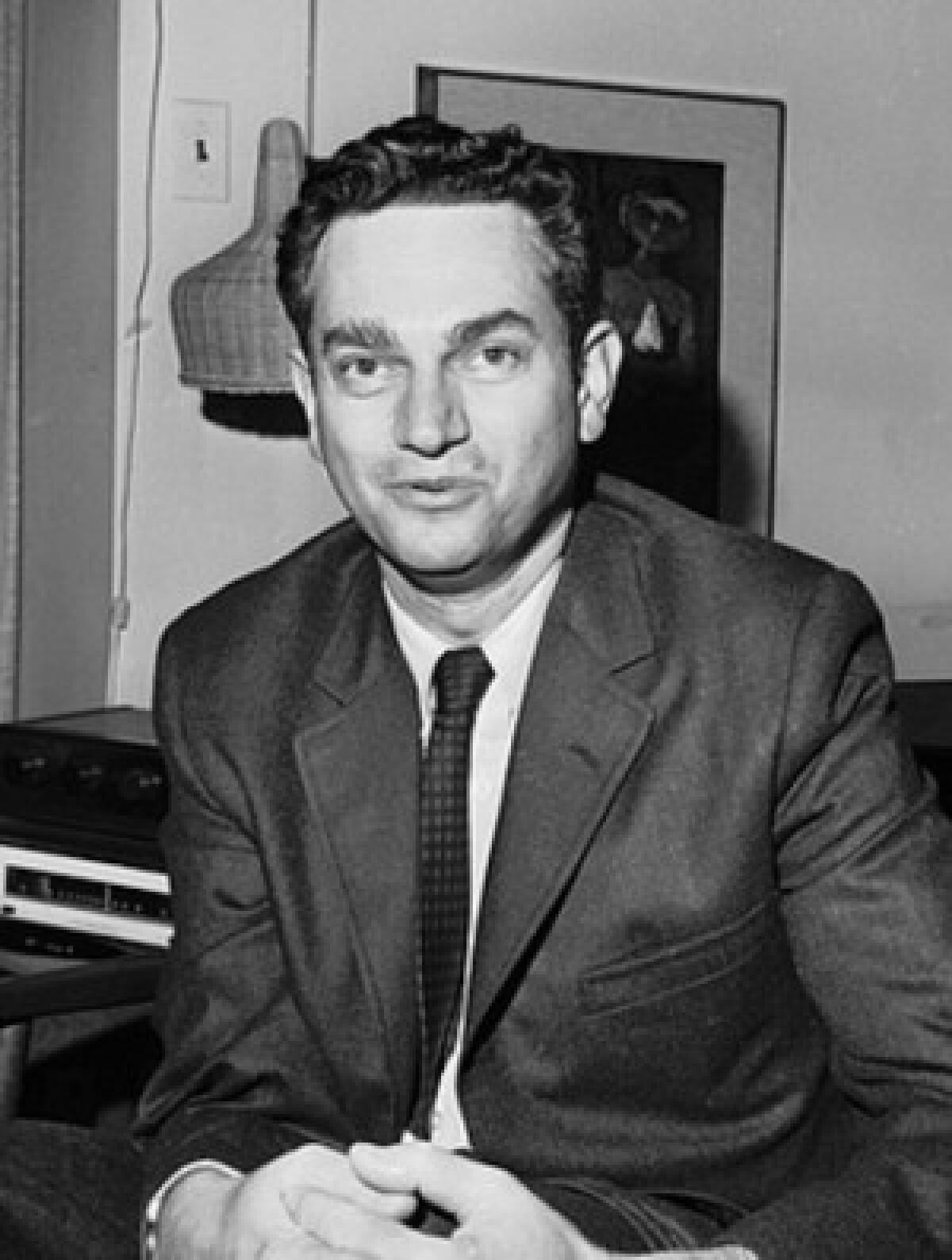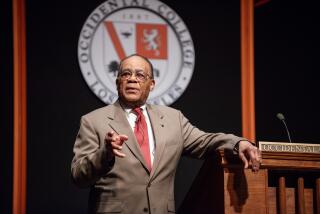Marshall Nirenberg dies at 82; biochemist won Nobel for deciphering genetic code

Marshall Nirenberg, the Nobel laureate who deciphered the genetic code that allows the information contained in genes to be translated into proteins, died Jan. 15 at his home in New York City. He was 82 and had been battling cancer.
Nirenberg, who spent his entire career at the National Institutes of Health in Bethesda, Md., and was the first government employee to win a Nobel Prize, was “one of science’s great titans,” NIH Director Francis S. Collins said.
Nirenberg was an outsider who was not considered among science’s elite when he began his career in the 1950s in what has often been called the golden age of molecular biology. Researchers were just beginning to understand the role and function of DNA, the genetic material that encodes the information necessary for life.
Francis Crick and James Watson had deduced the structure of DNA in 1953, demonstrating that it was the now-famous double helix composed of four repeating nucleotides. The next big question was how many of those nucleotides and in what combination were required to specify each of the 20 amino acids found in proteins. Crick concluded, largely on theoretical grounds, that three would be required; that would yield 64 possible combinations of three of the four nucleotides.
Theoretical physicist and astronomer George Gamow came up with a plan to decipher the code. He selected 20 prominent molecular biologists -- one for each of the 20 amino acids in proteins -- as members of the “RNA Tie Club” to attack the problem. Each was given a tie marked with the symbol of his amino acid, and the group met regularly to address the problem. Nirenberg, an unknown, was not a member.
Undaunted, he decided to attack the problem on his own. Working with postdoctoral fellow J. Heinrich Matthaei, Nirenberg adapted a cell-free system that could synthesize proteins using enzymes from bacteria that had been crushed in a mortar to break down their cell walls. His idea was to put fragments of RNA -- which was known to carry the genetic information from DNA to the protein-making machinery -- of known composition into the soup and see what proteins were formed.
Other researchers had thought about this approach but rejected it because the prevailing belief was that each protein produced in a cell required its own set of production machinery. Nirenberg thought that the process was more general, with the cell’s machinery able to make any protein depending upon what template it was given.
On Saturday, May 27, 1961, at 3 a.m., Matthaei put an RNA fragment composed only of uracil into the bacterial soup and found that it produced a protein composed only of phenylalanine. The pair had established the first letter of the genetic alphabet: the three-nucleotide fragment or codon composed of U-U-U was the template for phenylalanine.
“I literally jumped for joy,” Nirenberg later told an interviewer.
That August, Nirenberg presented their results in a paper delivered at the International Congress of Biochemistry in Moscow. Few researchers were in the room to hear his report, but one who was, biochemist Matthew Meselson, recognized its significance and persuaded Crick to have Nirenberg repeat his presentation the next day before a much larger audience.
By then, Matthaei had sent word that they had identified a second codon: The combination of three cytosines, C-C-C in the genetic shorthand, produced the amino acid proline. Observers at the meeting recalled that many of the scientists in the audience were mentally kicking themselves for not having performed the experiments that, in retrospect, seemed so simple and obvious.
The race was now on to identify the other 62 codons. Nobel laureate Severo Ochoa of New York University’s medical school mobilized his large laboratory and was widely assumed to have the lead in the race. Nirenberg, with his modest resources, was not expected to be a contender.
But a funny thing happened. Knowing a Nobel was in the offing, other researchers at NIH dropped their own projects temporarily and came into his lab to help with the effort. In all, more than 20 other scientists contributed to his work, and Ochoa eventually dropped out of the race when it became clear that Nirenberg would triumph.
By 1966, 61 of the 64 potential codons had been identified -- some amino acids could be produced by more than one codon. The next year, it was shown that the remaining three codons were punctuation marks indicating the end of a gene.
In subsequent experiments, Nirenberg showed that the same code was used in other species -- in fact, in all species on Earth. “You can look at trees, flowers, squirrels, birds, and you can know that we’re all related,” he later said.
In 1968, Nirenberg shared the Nobel Prize in physiology or medicine with two other researchers who had solved other aspects of the problem.
Fame came calling and Nirenberg was offered positions at other institutions around the world. He decided to stay at NIH, he said, because the steady funding freed him from the task of preparing grant applications and the lack of teaching left him more time for research. But he did teach the students who came through his laboratory, and two of them went on to win Nobels themselves.
He later shifted to neurobiology, making a variety of contributions, including the discovery of a fruit fly gene that is essential for heart development.
Marshall Warren Nirenberg was born April 10, 1927, in Brooklyn, N.Y. His father was a shirt manufacturer, but when Marshall developed rheumatic fever at the age of 8, the family moved to the more welcoming climate of Orlando, Fla., where the father went into the confectionary business. Nirenberg reveled in the wildlife-filled swamps, becoming an expert bird-watcher and entomologist.
He attended the University of Florida, receiving a bachelor’s degree in 1948 and a master’s in biology four years later. A doctorate in biochemistry from the University of Michigan in 1957 was followed by a postdoctoral fellowship at NIH.
Nirenberg’s first wife, Perola Zaltzman Nirenberg, died in 2001. He is survived by his second wife, Myrna Weissman; his sister, Joan N. Geiger of Dallas; four stepchildren and seven grandchildren.
More to Read
Start your day right
Sign up for Essential California for news, features and recommendations from the L.A. Times and beyond in your inbox six days a week.
You may occasionally receive promotional content from the Los Angeles Times.





